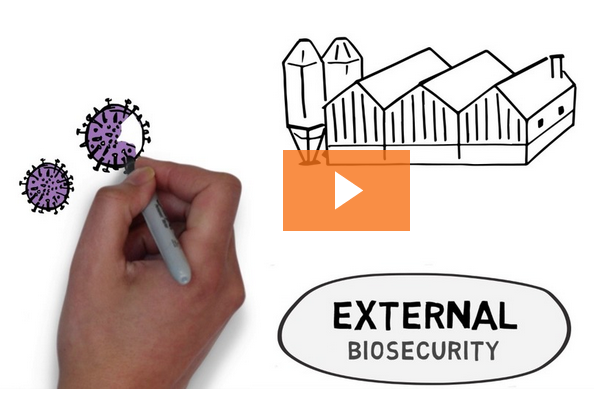



Video Tutorial Helps Establish Biosecurity for PRRS Control
GLOBAL - To help vets and producers establish a strong PRRS control programme, veterinary pharmaceutical company, HIPRA has issued an educational video focusing on the importance of strict biosecurity measures.A PRRS control program cannot be conceived without implementing biosecurity measures. Whilst external biosecurity focuses on exclusion (not allowing it to enter) internal biosecurity focuses on containment (not allowing it to move).
The biggest problem today for the control of PRRS in pigs is that immunity induced against the strain circulating within the farm (called homologous immunity) will never confer 100 per cent cross-protection against the arrival of a new strain (called heterologous strain).
Understanding how good or bad the external biosecurity measures are is essential to be able to predict how high the risk of suffering the arrival of new strains is, but also very helpful in deciding the vaccine program strategy to be used.
The three main routes for new PRRS virus strains to break into farms are transport vehicles, live animals and airborne transmission. The risk of heterologous infections can be minimized by controlling these three main routes of transmission, but other routes of infection should also be taken into account such as semen, personnel, fomites and insects.
Once infection occurs, the virus will be shed from infected animals via blood, saliva, milk, colostrum, urine, faeces and semen.
Moreover, some pigs have been reported to have been persistently infected for at least 200 days.
Therefore, internal biosecurity refers to any type of measures implemented which manage to help to reduce the spread of the PRRS virus within the animals. These measures will be mainly related to management protocols and hygiene. The main factors to be considered when evaluating the internal biosecurity measures are the pig flow, personnel equipment, needles, fomites and insects. Obviously, personnel compliance is the key to successful implementation of such procedures for the control of PRRS in pigs.
Veterinarians can play an important role, not only as the team members who deliver science-based biosecurity to the farm, but also as teachers to educate personnel and auditors to ensure that compliance is maximized.
With this new tool HIPRA is consolidating its commitment to PRRS control and reinforcing its positioning as reference in prevention for Animal Health.
To view the Hipra video and more on PRRS, click here.









